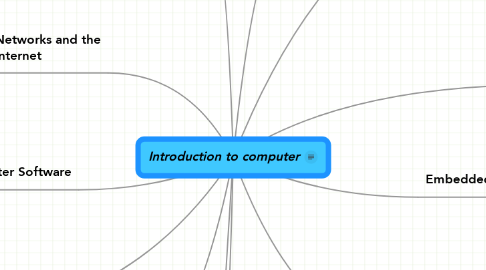Introduction to computer
by Jirapat Pongsakronprapawin


1. A computer contains many electric, electronic, and mechanical components known as hardware
1.1. Input Device
1.2. Output Device
1.3. System Unit
1.4. Storage Device
1.5. Communications Device
2. Networks and the Internet
2.1. The Internet is a worldwide collection of networks that connects millions of businesses, government agencies, educational institutions, and individuals
2.2. A social networking Web site encourages members to share their interests, ideas, stories, photos, music, and videos with other registered users
3. Computer Software
3.1. Software, also called a program, tells the computer what tasks to perform and how to perform them
3.2. Installing is the process of setting up software to work with the computer, printer, and other hardware
4. Personal Computers
4.1. Two popular architectures are the PC and the Apple
4.1.1. Desktop computer
4.2. A personal computer can perform all of its input, processing, output, and storage activities by itself
5. Game Consoles
5.1. A game console is a mobile computing device designed for single-player or multiplayer video games
6. Mainframes
6.1. A mainframe is a large, expensive, powerful computer that can handle hundreds or thousands of connected users simultaneously
7. Supercomputers
7.1. A supercomputer is the fastest, most powerful computerNew node
8. A computer is an electronic device, operating under the control of instructions stored in its own memory
9. Advantages and Disadvantages of Using Computers
9.1. Advantages of Using Computers
9.1.1. Speed
9.1.2. Reliability
9.1.3. Consistency
9.1.4. Storage
9.1.5. Communications
9.2. Disadvantages of Using Computers
9.2.1. Health Risks
9.2.2. Violation of Privacy
9.2.3. Public Safety
9.2.4. Impact on Labor Force
9.2.5. Impact on Environment
10. Mobile Computers and Mobile Devices
10.1. Mobile Computer
10.1.1. Personal computer you can carry from place to place
10.1.2. Examples include notebook computers, laptop computers, and Tablet PCs
10.2. Mobile Device
10.2.1. Computing device small enough to hold in your hand
10.2.2. Examples include smart phones, PDAs, handheld computers, portable media players, and digital cameras
